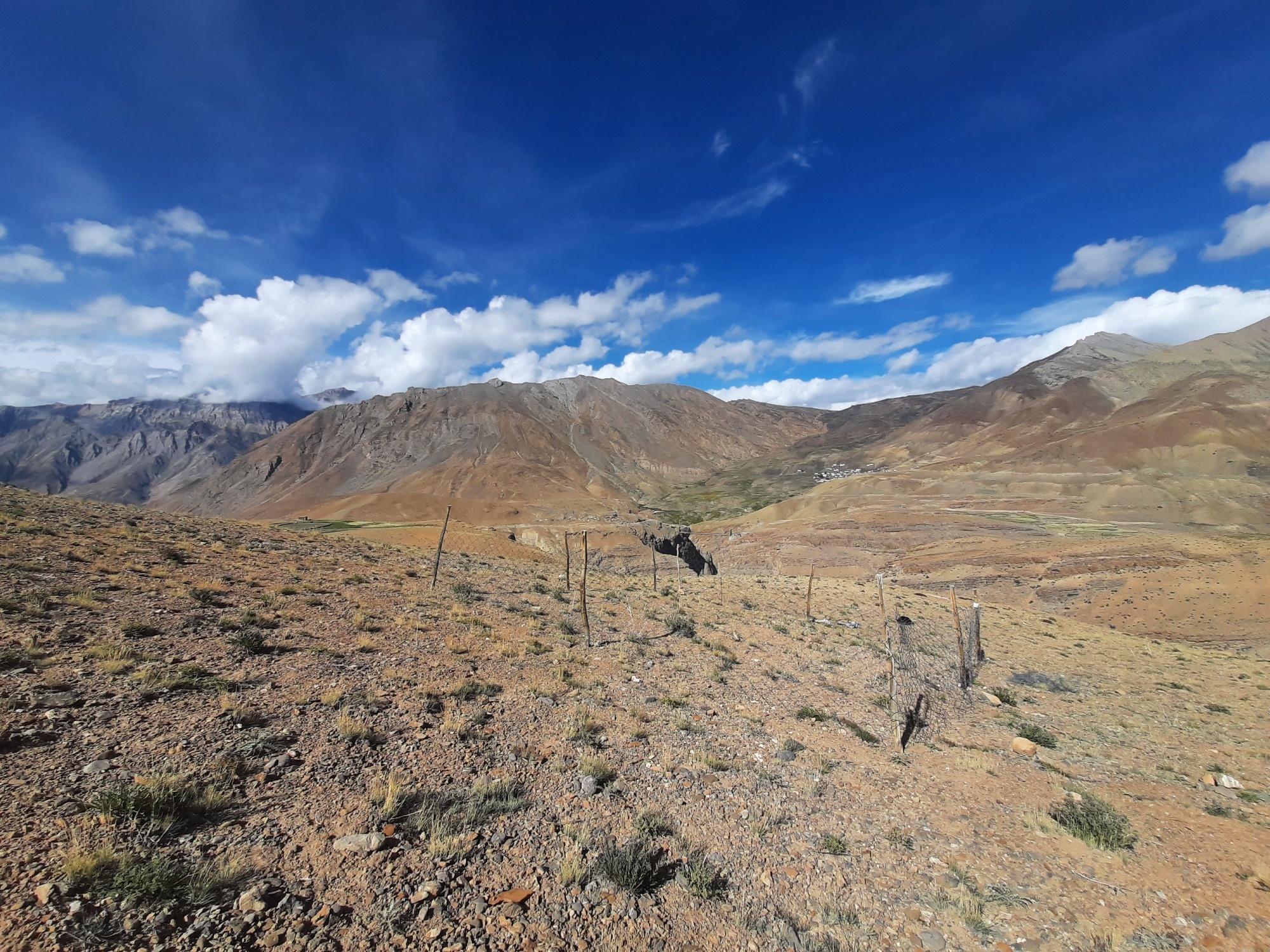According to a 16-year-long study conducted by scientists at the Centre for Ecological Sciences (CES) and the Divecha Centre for Climate Change (DCCC), Indian Institute of Science (IISc), large mammalian herbivores like the yak and ibex play an important role in sustaining the pool of soil carbon in grazing ecosystems like the Spiti region in the Himalayas.

Long-term field experiment in the high-altitude Himalayan desert ecosystem in Spiti, Himachal Pradesh. Image Credit: Dilip Naidu
The experimental removal of herbivore grazing from these ecosystems enhanced variations in soil carbon levels, which can have unforeseen negative repercussions for the global carbon cycle.
Since soil contains more carbon than all plants and the atmosphere combined, it is essential to ensure its persistence. When plants and animals die, the dead organic matter remains in the soil for a long duration before microbes break it down and release carbon into the atmosphere as carbon dioxide.
The soil pool is a reliable sink for trapping carbon.
Sumanta Bagchi, Study Senior Author and Associate Professor, Centre for Ecological Sciences, Indian Institute of Science
The research was published in the journal Proceedings of the National Academy of Sciences.
Soil carbon levels must be kept steady to counteract the consequences of climate change.
During his Ph.D. back in 2005, Bagchi started researching the effect of grazing animals on Himalayan ecosystems. With the help from the Himachal Pradesh state government, local authorities, and the people of the Kibber village in Spiti, Bagchi and his group created fenced plots (where animals were omitted) in addition to plots in which animals like yak and ibex grazed.
The team took soil samples from the area during the ensuing ten years, examined their chemical makeup, and tracked and compared the quantities of carbon and nitrogen in each plot year after year.
Comparing the fenced plots with no animals to the grazed plots where animals were present, it was discovered that the soil carbon fluctuated 30–40% greater from one year to the next in the fenced plots.
Nitrogen was a major contributor to these fluctuations. Nitrogen can either stabilize or destabilize the carbon pool based on the soil conditions. On the other hand, grazing by herbivores alters their interactions in ways that favor the former, the scientists determined.
Earlier research concentrated on detecting carbon and nitrogen levels over long time intervals, believing that carbon accumulation or loss is a gradual process, explains Dilip G. T. Naidu, Ph.D. student at DCCC and the study’s First Author.
However, the interannual variations in their data depict a totally different picture. These variations can have an impact on climate since they are linked to how large mammalian herbivores influence soil.
Since grazing ecosystems cover over 40% of the Earth's land surface, the investigators believe that maintaining the herbivores that keep soil carbon stable must remain a top priority for climate change mitigation.
Both domestic and wild herbivores influence climate via their effects on soil carbon.
Shamik Roy, Study Author and Former Ph.D. Student, Centre for Ecological Sciences, Indian Institute of Science
Bagchi and his colleagues are also investigating why domesticated herbivores like goats and sheep vary from their wild relatives in terms of how they influence ecosystems.
Domestic and wild herbivores are very similar in many respects, but they differ in how they influence plants and soil. Understanding why they are not alike can lead us toward more effective stewardship of soil carbon.
Shamik Roy, Study Author and Former Ph.D. Student, Centre for Ecological Sciences, Indian Institute of Science
Journal Reference:
Naidu, D. G. T., et al. (2022) Loss of grazing by large mammalian herbivores can destabilize the soil carbon pool. Proceedings of the National Academy of Sciences. doi.org/10.1073/pnas.2211317119.